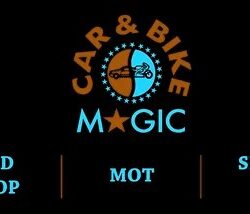The Real Difference Between “Clean” and “Detailed”
A quick wash before selling is standard practice. But detailing goes far beyond that — it’s the difference between looking clean and looking cared for.
Detailing involves restoring, protecting, and presenting every visible surface of the car, inside and out. Done right, it makes an older vehicle feel newer, both visually and emotionally. Buyers can sense that difference.
Here’s what professional detailing typically covers:
-
Exterior: Paint correction, polishing, wax or ceramic protection, headlight restoration, tire and trim conditioning.
-
Interior: Deep cleaning of carpets, seats, vents, and upholstery; leather conditioning; stain and odor removal.
-
Engine bay: Gentle cleaning and dressing — not for show, but to convey maintenance and pride of ownership.
Each of these steps plays a subtle role in influencing how a potential buyer perceives the car’s condition.
The Psychology Behind a Well-Detail
When I used to help dealerships prep trade-ins, I noticed something curious: cars that were detailed sold faster, even if they weren’t mechanically superior. Buyers equated cleanliness with reliability.
There’s a simple psychology at work here.
-
A spotless paint surface implies careful ownership.
-
A fresh-smelling, dust-free cabin suggests the car hasn’t been neglected.
-
A detailed engine bay, while not essential, reassures buyers that you didn’t have anything to hide.
Personal observation: One of the biggest mistakes sellers make is skipping interior detailing, assuming “people only care about the outside.” In reality, it’s the interior where buyers spend their test drive — and where they decide whether they can picture themselves in the car.
Small Investments, Big Returns
The financial math of detailing is surprisingly straightforward. A professional detail might cost a few hundred dollars, but the perceived value it creates can easily exceed that. In private sales, a clean, glossy, odor-free vehicle consistently attracts more inquiries — and buyers are less likely to haggle hard.
Here are a few examples I’ve seen firsthand:
-
A 6-year-old Honda Civic with faded paint sold for $900 more after a single-stage polish and interior reconditioning.
-
A used Tesla with minor scratches gained new life after ceramic coating and tire dressing — it sold in three days instead of three weeks.
-
A work truck that had years of grime buildup was detailed inside and out before sale; the buyer assumed it had lower mileage than it did.
These aren’t outliers. They’re proof that appearance influences perceived quality.
The Hidden Details Buyers Notice
Certain areas get overlooked but can make or break the impression of a well-maintained car.
-
Door jambs and sills – Buyers notice grime here when they open the door. Clean jambs make the car feel newer.
-
Touchpoints – Steering wheel, shifter, door handles. If these are clean and conditioned, the whole cabin feels more cared for.
-
Headlights and trim – Oxidized headlights can age a car by years; a quick restoration instantly improves the look.
-
Glass clarity – Streak-free glass not only improves visibility but adds to that “new car” feel.
Insider tip: Wipe down the underside of the trunk lid and hood. It’s an area most sellers skip, but buyers who open them notice immediately.
Paint Protection and Long-Term Value
One area often misunderstood by sellers is paint protection. Coatings and sealants aren’t just for car enthusiasts — they’re a strategic investment in resale.
A properly applied ceramic coating, for instance, helps preserve the paint finish, making future cleanings easier and preventing oxidation or water spots. According to detailing professionals in Mansfield, TX, vehicles with well-maintained coatings often show better gloss and fewer surface imperfections even years later — a visible advantage when the time comes to sell.
It’s not about making the car look like a showpiece; it’s about keeping it in sale-ready condition with less ongoing effort.
DIY vs. Professional Detailing — Knowing When to Call In Help
You can certainly handle basic washing, vacuuming, and waxing at home. But professional detailing brings tools and techniques that simply aren’t available in a driveway setup.
For example:
-
Dual-action polishers that safely remove paint swirls without cutting too deep.
-
Steam cleaners that sanitize interiors without chemicals.
-
Hot-water extractors that pull years of dirt out of fabric seats and carpets.
When you’re preparing to sell, hiring a pro to perform a full pre-sale detail is often worth it — not just for appearance, but for the professional touch that buyers can feel.
Insider tip: If you’re on a tight budget, ask for a “mini-detail” or “pre-sale package.” Many shops offer focused services that target first impressions — exterior shine, odor removal, and glass clarity — at a lower cost.
Timing Matters: Detail Before Photos, Not After
If you’re listing your car online, timing your detail is key. Always detail before taking photos. Online buyers scroll fast, and your pictures need to stand out in that two-second window where they decide whether to click.
A shiny hood, clear reflections, and a clean cabin photographed in good light can multiply your ad’s effectiveness. Once buyers show up in person, the condition of the vehicle then confirms what they saw online — reinforcing trust.
Common Mistake: Over-Detailing or Masking Flaws
There’s a fine line between presenting your car well and trying to disguise issues. Some sellers go overboard with heavy gloss dressings or scented air fresheners to hide underlying problems. Buyers, especially experienced ones, see through that instantly.
Keep it natural. The goal of detailing is to highlight honest care, not to create illusion. Use a subtle interior scent, not something that screams “what are you trying to cover up?”
Long-Term Payoff: More Than Just a Higher Price
Detailing doesn’t just increase resale value; it can also reduce the time your car sits on the market. A cleaner car attracts more inquiries, more test drives, and ultimately, more offers.
There’s also a personal satisfaction that comes from handing off a vehicle in excellent shape — a sense that you’re passing something along with pride rather than desperation. Buyers feel that energy, too.
Wrapping It Up: Clean Cars Sell Confidence
In today’s used-car market, where every dollar and impression counts, detailing is one of the most effective — and most overlooked — ways to protect your resale value. It bridges the gap between a car that’s merely for sale and one that’s ready to be bought.
A thorough detail tells a silent story: that the car was loved, maintained, and respected. And that story, more than mileage or brand, is often what convinces a buyer to pay your asking price.
So before you post that ad or take your car for an appraisal, give it the attention it deserves. You’ll be surprised how much value a little polish, patience, and professional care can add — not just to the car’s price, but to your peace of mind.




